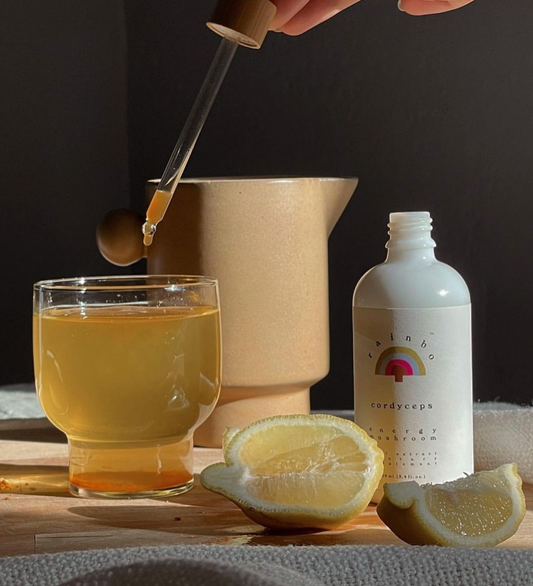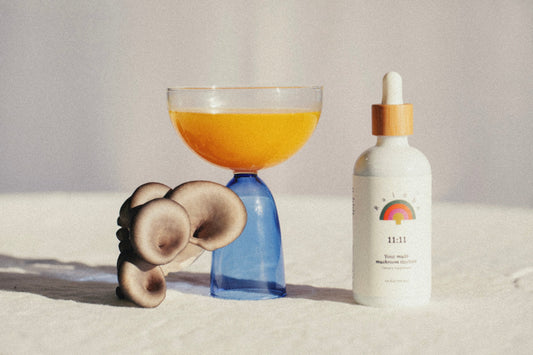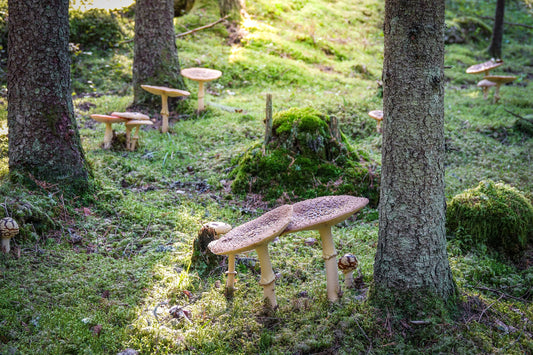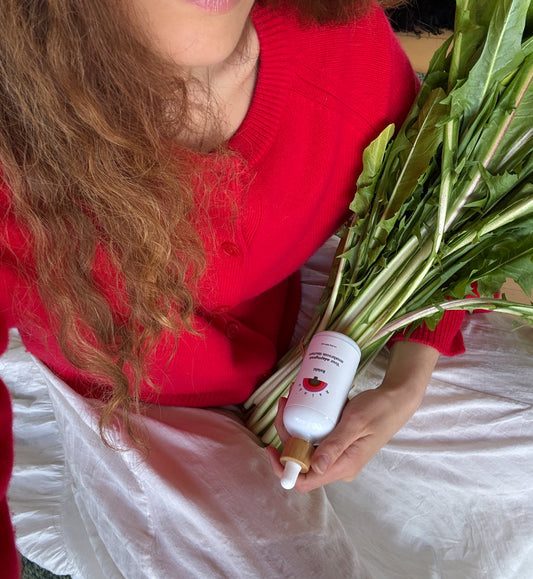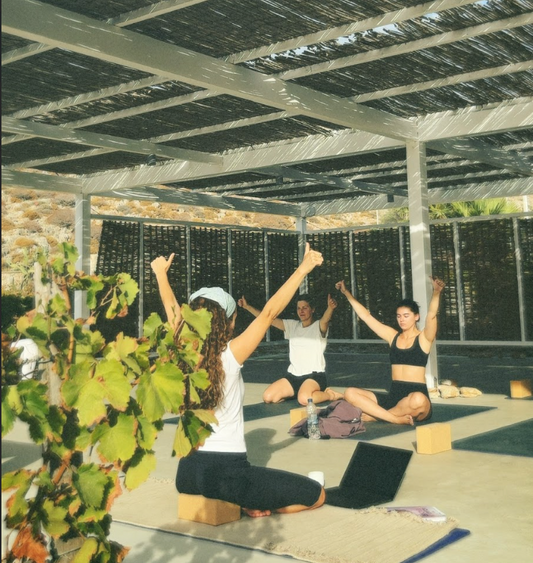How to cook with Mushrooms
HOW TO COOK WITH MUSHROOMS
Tinctures are not the only way to access mushroom medicine. One of our favourite way to consume mushrooms is to cook them!
Cooking with mushrooms can seem intimidating to some. Fungi are so foreign! Or maybe some of us just aren’t used to incorporating fungi into our dishes. We know some people out there aren’t mushroom fans (we don’t take it personally). To the mycophobic - we urge you to give mushrooms another shot!
Introducing novel, nutritious foods into our diets is one of the best things we can do for our gut and overall health. It’s like what sudoku does for our brain - it keeps us sharp.
Sometimes accepting something new requires a deep understanding of it to make it palatable.
For both those new to cooking with mushrooms, and for those mushrooms-for-breakfast-lunch-and-dinner type kin, here are some important tips on how to cook with mushrooms.
#1 Buy Organic
If it’s available to you! Mushrooms are most recently found on the Clean 15 list of produce with a low pesticide load and so if purchasing organic isn’t accessible to you then fret not - better to consume mushrooms than none at all!
However, understanding how mushrooms grow may contribute to your decision in the organic section.
In order to grow, mushrooms break down their surroundings into their own building materials. If the substrate (the food material the mushroom grows on) is nutrient dense, then the mushroom will be nutrient dense. Using fungicides destroys the complexity and integrity of the microbial life in the substrate, which results in less nutritious mushrooms. Not only that - mushrooms are like sponges - pesticides in the air are easily absorbed into the final product!
Tip! Do not wash your mushrooms directly with water. Because mushrooms have a high capacity for water retention, washing them directly with water can lead to a soupy frying pan (ie. excess water in the pan). Use a mushroom brush to dust them off, or a damp cloth or paper towel to wipe clean your organic mushrooms. Pro tip: if you don't have a mushroom or vegetable brush, a toothbrush works just fine!
#2 Always, always cook mushrooms
This one is a non-negotiable! For two reasons. One—to unlock the good stuff. Two—to kill off any bad stuff.
Mushrooms have all of their nutrients and medicinal compounds locked up behind indigestible cell walls made of a fibre called chitin. If we don’t cook our mushrooms, we can’t access all of their nutritional benefits! Heating mushrooms will release the beneficial compounds from the chitinous cell walls making them available for absorption in the body.
Additionally, raw mushrooms may contain harmful pathogens and heat-sensitive toxins. Cooking mushrooms eliminates this risk!
Tip! Grill your mushrooms. A study looked at the difference in the nutritional profile of mushrooms after comparing 4 cooking methods: grilling, microwaving, frying, and boiling. Turns out, both grilling and microwaving were found to be the best methods for retaining the highest nutritional composition and antioxidant capacity of the mushrooms. We recommend grilling for best flavour and texture!
Tip! Use the caps. All the parts of culinary mushrooms are edible, however the stems are typically chewier than the smooth caps. Cut off the stems if your preference is less chew, more velvet. If you don't use the mushrooms caps, we suggest storing them in the freezer with other food scraps until you're ready to make a vegetable broth.
Tip! Don’t crowd your mushrooms. Cooking your mushrooms on their own (before adding other accompanying foods) and making sure each mushroom has surface area touching the heat source ensures the best flavour profile and texture. Ps. that scene from Julia and Julia taught us to never crowd the mushrooms.
Tip! Dry sauté fresh mushrooms. You don’t need to add oil if you are sautéing your mushrooms! Start with a dry sauté, and allow the water retained in the mushrooms to cook off. Then add a delicious fat of choice to the pan at the end.
Flavour profiles and texture highlights of our favourite culinary (and medicinal) mushrooms!

Choice Edibles - our favourite culinary mushrooms!
White button, cremini, portobello (Agaricus bisporus): Meaty texture. Mild earthy flavour. Tends to take on the flavour of what it’s cooked with! Great for sautéing, stuffing, grilling, baking. Chop up stems to sneak into any filling.
Shiitake (Lentinula edodes): Meaty texture. Smokey and full bodied in flavour. Flavour is strong enough to hold its own. Use the caps, the stems can be tough. Great in stir fry.
Lion's Mane (Hericium erinaceus): dense, meaty, no stem. Lose some of their flavour to the surrounding flavours although retain sweetness. texture allows them to absorb oils, butter and broths well, good substitute for crab cakes, slice into steaks and fry/grill.
Oyster (Pleurotus ostreatus): delicate flavour, light texture. Very tender and moist, silky when cooked. Great texture boost in pastas. Smooth buttery flavour notes, soft texture. Flavourful additional to soups, stews, pastas.
Enoki (Flammulina velutipes): mild flavour, crunchy texture, great in stir fry (add last). Unlike other mushrooms, can wash directly with water. Great addition to soups, stews, salads and noodle dishes.
Maitake (Grifola frondosa): savoury, flavourful, stand alone mushrooms. Sautee, grill.
Chanterelle (Cantharellus): a light, peppery flavour - chefs love to cook this delicate and bright mushroom! Great as a stand alone side dish. Can sautee with ghee and leeks, add to risotto, pasta. You can find this mushroom at farmer's markets since it's difficult to cultivate.
Morels (Morchella): this is a top-tier mushroom! Morels have a deep, earthy and nutty flavour and are meaty in texture. This is also a great stand alone mushroom side dish, delicious when sauteed in butter or ghee. These mushrooms are expensive and are bought wildcrafted from foragers and at farmer's markets. They are springtime mushrooms and difficult to cultivate.
Suggestions on recipes!
Crispy mushrooms with creamy white beans and kale
Caramelized Fennel and Onion Mushroom Dip

